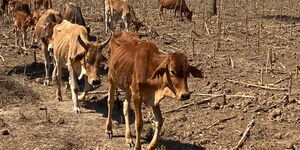India's ambitious plan to import cheetahs from Kenya has resurfaced, stirring renewed interest and concern as both countries navigate a complex conservation landscape.
The proposed transfer, initially thought to be close to finalisation, now faces significant hurdles as both nations work to establish a viable agreement.
Gobind Sagar Bhardwaj, ADGF (Project Tiger) and Member Secretary of the National Tiger Conservation Authority (NTCA), reaffirmed that Kenya remains a key player in India's strategy to reintroduce cheetahs to its wildlife. India has identified the need to import 8- to 12 cheetahs annually to establish a sustainable population, a crucial step in its ongoing conservation project.
"Our goal is to ensure a robust meta-population of cheetahs in India," Dr Bhardwaj stated. "To achieve this, we need to continue bringing in 8-12 cheetahs each year. We started this effort last February with eight cheetahs in Kuno National Park, and we plan to introduce more soon."
Despite these assurances, reports from India on August 8 revealed that no formal agreement has been signed between Kenya and India regarding the cheetah importation.
Union Minister of State for Environment, Kirti Vardhan Singh, confirmed during a session in the Rajya Sabha that no formal deal had been finalised contrary to earlier reports suggesting that the agreement was imminent. The speculation around the deal gained momentum following a high-profile visit by a Kenyan delegation to India in early May.
During this visit, the delegation was introduced to Project Cheetah, a high-stakes initiative aimed at reintroducing cheetahs to India after the species was declared extinct in the wild decades ago. However, as of Thursday, August 29, reports indicate that India's government remains undecided on sourcing cheetahs from Kenya.
A planned visit by an Indian delegation to South Africa to discuss the next batch of cheetahs has been postponed, adding to the uncertainty surrounding the project.
The delay follows a troubling development in Kuno National Park, where the death of a lone free-ranging male cheetah, Pawan (Oban), has brought the number of cheetah casualties to eight.
This incident has cast a shadow over the cheetah reintroduction efforts, which have already faced criticism due to the high mortality rate among the 20 cheetahs transported from Namibia and South Africa over the past two years.
Despite the setbacks, the Indian government remains committed to sourcing more cheetahs.
The Indian delegation, which includes experts from the Ministry of Environment, Forests and Climate Change (MoEFCC) and NTCA, was set to explore South Africa’s captive-breeding program and discuss further steps with the South African Department of Fisheries, Forestry and Environment (DFFE). This visit is now expected to be rescheduled for later this year.
In parallel, discussions with Kenya continue at a ground level. Kenya, located near the equator and experiencing similar seasonal patterns to India, has been considered a suitable source for cheetahs that could potentially adapt well to Indian conditions.
However, the absence of a formal agreement complicates the process. The draft MoU proposed by Kenya included provisions for India to assist in equipping Kenyan forest rangers, which would enhance conservation efforts in Kenya.
Without a formal partnership, India's ability to advance its cheetah conservation plans could be at risk. The success of Project Cheetah hinges not only on acquiring additional cheetahs but also on establishing strong international collaborations to support both countries' conservation goals.












